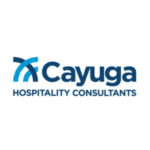
Master Planning, a 99 Ha large-scale estate in Indonesia, is a complex and ambitious undertaking requiring careful consideration, planning and financial backing. Mistakes during the initial phase can lead to costly delays, unsustainable development, and a failure to meet the project and stakeholders’ expectations.
This estate is located in a prestigious spot in central Indonesia but has been neglected for several years due to COVID-19 and financial mismanagement. The estate has an 18-hole signature resort-style golf course and two 5-star existing resorts, one with 70 bedrooms and one with 50 standalone villas. In addition, it will have a 5-star 100-room hotel, an international tennis and clubhouse facility with several indoor and outdoor courts and a significant promenade of retail and culinary outlets. It will also have a standalone Beach Club and a 5,000 M² luxurious Spa to service the entire estate. There are also plans to construct 80 + high-end villas.
Complex Hospitality Case Study: Mistakes to Avoid
1. Local Culture and Traditions
Bali has a rich cultural heritage, and strong traditions influence local life and customs. Disregarding these elements can lead to community pushback and a loss of authenticity. Bali also has some significant laws regarding building design; although urban planning in Bali, in general, is non-existent, the local government and, in this case, the local government management of the area have very strict rules and regulations to adhere to.
- Mistake: Designing a property that doesn’t reflect Balinese architecture, culture, and customs. Designing structures that align with the area’s current guidelines and not communicating this with the authorities. Design based on a single stakeholder’s desires.
- Avoidance Strategy: Engage with local cultural experts and architects and involve the authorities in planning to ensure the development respects and integrates local traditions. Engage with local authorities and discuss possible design amendments to reflect the architectural intent’s requirements and meet the authorities’ expectations.
2. Design Continuity
In this case, the majority shareholder for the property is not a hotelier, a fact that is frequently brought up and discussed within the senior management. However, the shareholder has very specific ideals, design parameters and expectations. To ensure that this is emulated throughout the property, these design ideas must be drawn out and mapped into the integrity of the estate.
- Mistake: Utilising more than one overall architect to Master Plan the entire estate. Utilising architects that have not undertaken a project of this size and magnitude previously.
- Avoidance Strategy: Due diligence is required to vet the architect to ensure they have the experience, resources and ability to undertake the design. The architect then collaborates and interacts with the single stakeholder and ensures that the stakeholder is satisfied with the previous works undertaken and the other design entities working on the other elements of the overall master plan.
3. Planned Staging Strategy
The property is spread out, and many public access and other areas intersect with the development. Mapping out the planned stages of the project is essential to ensuring that the disruption of these areas is kept to a minimum. Educating stakeholders on the appropriate sequencing of works is also key.
- Mistake: The stakeholders and unaware of the detail and length of time it takes to undertake work, and their expectations are not in line with reality. In addition, other entities promise goals that are unachievable or unrealistic.
- Avoidance Strategy: Create the overall master plan on a single detailed drawing and overlay this with a multi-coloured staging plan to graphically demonstrate the stages in which elements are constructed. Logically step out of the different areas to explain to stakeholders the appropriate way to undertake physical construction.
4. Environmental Impact Assessment
Bali’s natural environment is both a key attraction and a fragile ecosystem. Poor planning can result in significant environmental degradation. This also relates to significant changes in the current natural flow and ebb of the land to create significant parcels of real estate for commercial or residential use.
- Mistake: Failing to conduct thorough environmental impact assessments (EIAs). And failure to thoroughly investigate the current environmental state.
- Avoidance Strategy: Perform comprehensive EIAs and implement sustainable practices to minimise environmental footprints, such as using eco-friendly materials and preserving natural habitats. Undertake a thorough topological mapping of the entire area, including boundary mapping, to ensure no encroachment of neighbouring properties.
5. Infrastructure Planning
Infrastructure is crucial for the functionality and appeal of any large-scale development. Neglecting this aspect can lead to operational inefficiencies and a poor visitor experience. It will also lead to a hindrance to additional growth of the property and the ability to sustain future development.
- Mistake: Not planning for adequate roads, utilities, and services. Not allowing for simple services such as rubbish collection, MEP access or emergency service access.
- Avoidance Strategy: Develop a detailed infrastructure plan that includes roads, sewage, water supply, electricity, and internet connectivity, ensuring they are scalable for future growth.
4. Legal and Regulatory Compliance
Bali has specific zoning laws, land use regulations, and building codes that must be adhered to. In addition, the local government entity will enforce specific requirements for roof pitches and other subtle design elements and codes.
- Mistake: Proceeding without proper permits and regulatory approvals. Commencing construction with out going through the appropriate government committees and approvals.
- Avoidance Strategy: Engage local legal experts to navigate the regulatory landscape, secure necessary permits, and ensure compliance with all local laws. Ensure the local architect knows the requirements and adheres to the necessary procedures.
5. Market Research
Understanding the target market is crucial for the success of any property development. Misjudging market demand can result in financial losses and underutilised facilities. It will also compromise the potential sales value of the residential components.
- Mistake: Failing to conduct detailed market research to understand potential visitors’ or residents’ needs and preferences. Failing to research potential organisations with local and international connections and understand the current market.
- Avoidance Strategy: Conduct comprehensive market research to identify trends, preferences, and demographics, tailoring the master plan to meet these insights. Engage with consultants who know and understand the marketplace and have experience in similar-sized projects and the complexity of markets.
6. Personnel Resources
It is one thing to read a resume and see a wealth of knowledge and experience; it is another to understand if that person has lived, breathed, and owned it. We spend considerable time and money hiring people, and once they are entrenched, it is very hard to back things out.
- Mistake: Do not just read resumes and assume they are correct and accurate. Don’t forgo pre-vetting with agencies and other entities. Always follow up with reference checks, and don’t rely on written references. Don’t just listen to the opinions of others without verification.
- Avoidance Strategy: Utilise an appropriate head hinting agency to screen, vet and confirm that potential hires have done what they say they have done and can achieve what you want. Write a detailed position description to ensure it captures the appropriate KPIs and tasks.
7. Focus on Sustainability
Sustainability is not just a buzzword; it is necessary for long-term success and environmental stewardship. It is also very important for potential owners and travellers to see that the property is doing what it should to maintain the balance of development and sustainability.
- Mistake: Overlooking sustainable practices in design and operation. Neglecting to undertake workshops to determine what can and can’t be achieved on-site and leveraging the local network to assist in achieving this.
- Avoidance Strategy: Integrate sustainable practices such as renewable energy sources, water conservation systems, and green building techniques into the master plan. Engage with potential local operators to ascertain what services could be utilised within the facility. Plan within the master plan for these elements to be integrated at appropriate stages.
8. Risk Management
Every large-scale project is susceptible to various risks, including financial, environmental, and social. Especially within Indonesia, QA/QC is a significant challenge, and the calibre of engineering design development is not as robust as in other countries.
- Mistake: Failing to identify and mitigate potential risks. Underestimating the length and breadth of potential development and ongoing operations risks.
- Avoidance Strategy: Develop a comprehensive risk management plan that anticipates potential issues and outlines strategies for mitigation and response. Ensure the design teams are engaged to undertake this exercise to ensure the design captures the risk mitigation.
9. Overdevelopment and Density Mismanagement
Balancing development density with open space is essential to maintain the appeal and functionality of the property. With the inclusion of the golf course within the development, safety setbacks and other factors all come into play concerning density management.
- Mistake: Overbuilding and squeezing the development into narrow corridors, not allowing for green access areas, natural pathways, and walkways. Vehicle circulation issues and access.
- Avoidance Strategy: Plan for balanced development with ample green spaces, recreational areas, and low-density zones to enhance the quality of life for residents and visitors. Ensure that appropriate traffic management consultation is undertaken. Before committing to schematic design, undertake block design and line-of-sight reviews to ensure no clashes.
10. Long-Term Maintenance and Operational Costs
A well-planned property should be easy to maintain and sustainably over the long term. It should allow for growth and ensure that components are readily available and appropriate schedules and plans are in place to ensure maintenance is undertaken.
- Mistake: Not planning for ongoing maintenance and operational expenses. Not incorporated into construction service agreements. Inadequate contract management concerning Defect Liability Periods and Warranties.
- Avoidance Strategy: Develop a long-term maintenance and operational plan that includes budgeting for regular upkeep, staff training, and sustainable practices to ensure the property remains functional and appealing. Ensure appropriate handover documentation is provided and set up long-term service contracts where possible.
Case Study in Master Planning for Developers
Master planning a 99-hectare property in any location or country presents numerous challenges, but avoiding these common mistakes can lead to a successful, sustainable, and culturally respectful development. Developers can create a property that thrives economically and socially while preserving Bali’s unique beauty and heritage by engaging with local communities, prioritizing sustainability, and conducting thorough research and planning. Utilizing appropriate consultants to undertake the research up front managed by a central core team with clear decision-making parameters and direction is essential. Without this core management to guide, direct and develop the overall master plan and design intent of the facility, you will not achieve the ROI or the long-term KPIs of the estate.

















